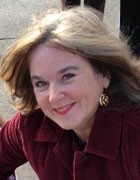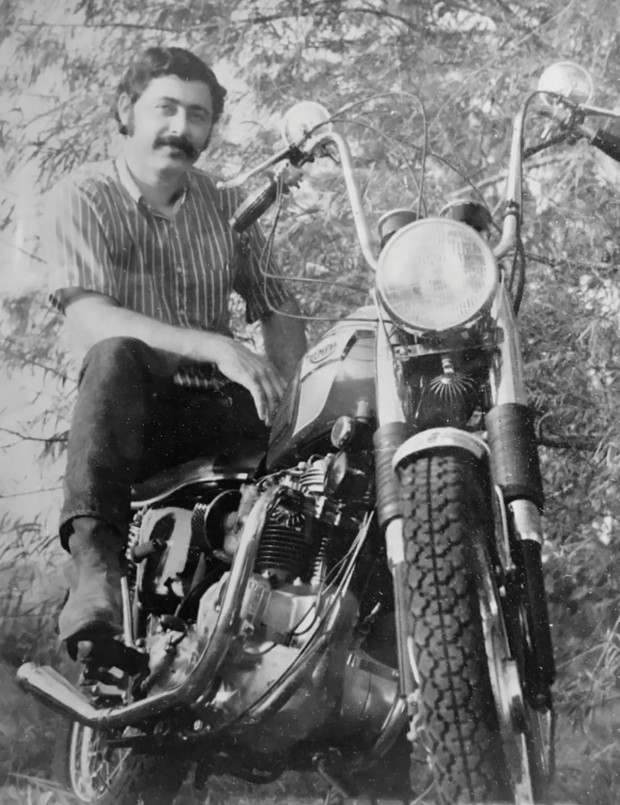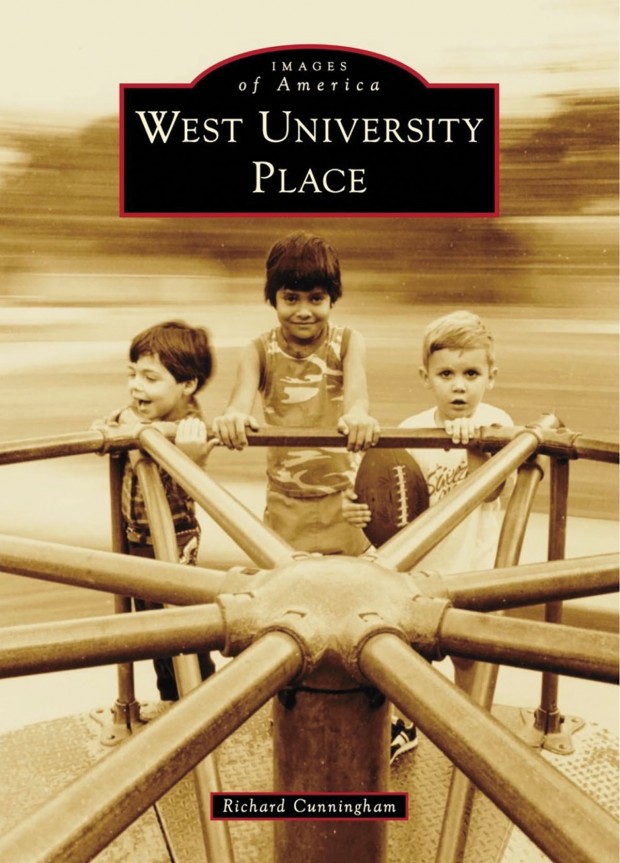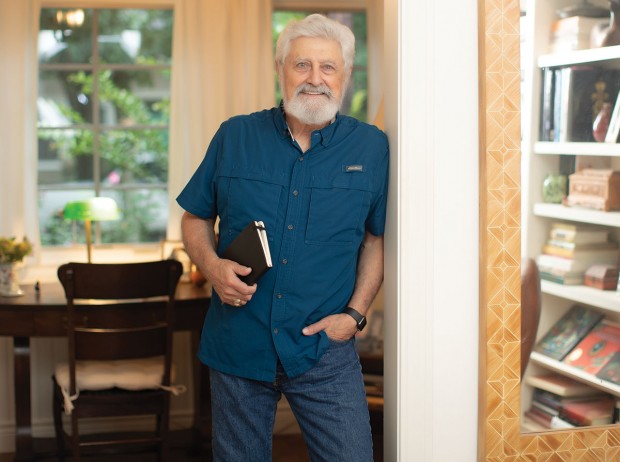The Cunningham Chronicles
Neighborhood blacksmith to wordsmith

It was the early 1960s in wood-paneled suburbia. The era of avocado-green kitchen appliances and television’s classic, The Twilight Zone. A time of unbridled innovation in space, art, music and design.
Young Richard Cunningham was innovating up a storm, much to his parents’ chagrin.
“Somebody gave me a lawnmower that didn’t work, and I fiddled with it till I got the engine working,” recalls the West University Place resident of his tinkering obsession in the family’s Westbury garage, at age 13. “I took the engine off, and I traded somebody something for their old bicycle, and I mounted that engine on that bicycle.”
His mother, startled by the sound of an engine, looked out to find her son zooming down the road. Panicked, she called a neighbor.
Can you come by? Richard’s on some machine, and he’s riding down the street!
The neighbor, an engineer, came down, and was soon zipping past on the contraption. “Look!” he yelled gleefully. “Richard built a motor bike!”

RIDING AND WRITING Richard, 24 here, spent a good part of his life on motorcycles, parting with this one, a Triumph 650 Bonneville, to fund a cross-country summer trip with a friend in 1971.
Word got around. I was like the village blacksmith,” recalls Richard, of his collection of lawnmower engines and bike parts in his family’s garage.
Now, words are his parts.
“For me, writing is like building something. The words on a page aren’t just a bunch of words. It’s a structure. It’s something you build. Part of my brain is always working on building stuff,” says Richard, 77, a freelance science and technical writer whose latest work is a labor of love, a book about West University Place. The community has been his home, all told, for 28 years. He lived here during the 1980s with his first wife and son. He loved it so much that he returned in 2007 with second wife Lily Ann.
Images of America: West University Place comes out on July 15, part of Arcadia Publishing’s series that celebrates the history of neighborhoods, towns, and cities across the country. The book follows West University Place’s evolution from a treeless farmland to one of the most livable small towns in Texas, celebrating its centennial this year.
His son Brittain is the smiling child on the left on the book’s cover, on a Wier Park merry-go-round. Richard, on the city’s parks and recreation board, snapped the shot decades ago.
Richard and Lily Ann, a retired University of Houston art history teacher, live in a remodeled 1948 one-story bungalow they aptly named “Cunningham Cottage.” The home is a testament to the creative compass that guides their life. It’s outfitted with a fusion of sculptures and fine craft of every variety, much by their own hand, some by friends.
“I can’t think of a single thing in this house that doesn’t have personal meaning to us,” says Richard, flipping through a thick three-ring binder of interviews and research, the meat of his book. He talks of the circuitous route that led to his favorite craft, writing.
As an adolescent, when he wasn’t working with engines, he was equally fascinated by typewriters. He mowed lawns at $2 a pop, edged for another $2, saving $50 to buy a portable typewriter. “Thinking back, a weird thing for a 13-year-old, but I was fascinated with it,” Richard says. He took typing class at Westbury High School, so his fingers would learn to fly across the keys.
He enjoyed that class, the others not so much. “My parents were terribly afraid because all my grades were so bad. I didn’t get a lot of positive reinforcement when doing things like building a motor bike. It was more like they were terrified.” His mother had him tested. Results? Mechanical aptitude in the top percentile.
His dad, an international manager for Continental Carbon Company, moved the family to the Netherlands during Richard’s senior year. With money he’d saved, Richard bought his first real motor bike, soaking in the country’s beauty.
College years lit a fuse. Richard exceled at Oklahoma State University. He majored in journalism and was a photographer for the yearbook. Always with the thought that he would work for himself one day.
With war raging in Vietnam, he expected to get drafted the summer of 1969, after graduating. His medical physical put a stop to that.
“The doctor put a finger to my face and asked me to focus. I said, ‘Sorry, that’s one thing I can’t do,’” recalls Richard, born with nystagmus or “dancing eyes,” a condition he had surgically corrected five years ago. Nystagmus causes repetitive, uncontrolled eye movements.
The doctor slapped a 4F on his card, a military term meaning not qualified for service. “I was stunned because I had not counted on anything other than going into the army.”
He was offered a full-time job at the same company that employed his father, having worked there summers. He wrote, illustrated, photographed, and did anything they needed in advertising. He stayed for two years, then about-faced with a decision – perhaps the most freeing of his life – that set his parents on edge. Again.
A co-worker friend, Bill Wilson, confided that he soon planned to quit to take a cross-country, summer-long road trip before starting grad school. Would Richard want to come?
Oh, I couldn’t do that!
A few minutes later…
Heck, why not? I’m unattached. Now’s the time!
Off they went. Richard owned a sweet ride those days, a Triumph 650 Bonneville motorcycle, a beauty in bright red. He sold it for $700 to fund his trip.
An old Ford Econoline van was their ride, with a shape as square as a box of crackers, windows all the way around. Richard’s sister adorned it with red, white, and blue U.S.A. curtains and Richard painted “Psychiatric help: 5 cents” on the vehicle’s backside. The previous owner had outfitted it with homemade bunks, a Coleman stove and ice chest. Perfect.
“It was so freeing, life-changing in a way,” says Richard of the 1971 trip, covering 15,000 miles.
Richard had $60 in the bank upon return to Houston. He spent it on drinks and chips for a party he hosted, announcing his return.
Richard’s parents had been terrified their son would have no job prospects upon his return. But they needn’t have worried. Through a connection, Richard landed a contract with Almeda Mall. Before long, he was making promotional posters for the mall, and more malls came calling. Richard had a handful of retail clients, then some industrial clients, too. Industrial eventually won out. He found his niche.

A photograph Richard snapped decades ago of his son Brittain (at left) with two others on a Wier Park merry-go-round was used as the cover for his book about West University Place.
Six months into his freelance career, Richard rented office space in a house on Norfolk, just off Shepherd Dr. “It was one of the best things that ever happened to me,” he says. He shared space with commercial artists and graphic designers who mentored him. “Sometimes I’d accept a job and then ask the guys in that house how to do it.”
He did a lot of work for Shell, but when industrial work dried up in 1986, he turned to commercial and event photography to make a living. He eventually wound his way back to industrial clients and was traveling internationally, having the time of his life. He’s collected many friends along the way. A handful of them meet weekly in person and via Zoom for what they call “geezer and curmudgeon” chats.
“He’s like an in-born shepherd. He gathers people and people meet because of him,” says Lily Ann of her husband.
“Richard does that every day of his life, with everyone,” says friend Don Stalinsky. The West University resident has known Richard since the 1980s and has worked with Richard on projects for ExxonMobil, Noble Energy, and Chevron. But it’s not all work. They battle it out on the racquetball court nearly every week.
“He’s a naturally affable soul. He’s the most capable, gentle person I know with not an angry bone in his body. Unless you hit him with a racquetball,” Don deadpans.
“You can never ask him for any kind of help that he won’t say ‘yes’ to, which is a rarity in human beings,” says his friend of 50 plus years, Bob Lapsley, 82. The commercial artist was a founding member of the Houston Society of Illustrators and a former teacher at the Art Institute of Houston.
Richard got his master’s in science and technology journalism at Texas A&M University in 2002. “I had been writing for so long. I wanted to get my master’s to see if I was doing things right,” says Richard. “Turns out that a lot of what I was doing was right. And that was important because it gave me more self-confidence. In the back of my mind, I was thinking it would be so cool to write a book with my name on it.”
He self-published two historical mystery novels set in Galveston and Houston, Maude Brown’s Baby and Three Good Leads, two books in a trilogy. He’s working on the third.
Writing a book about West University Place, highlighting its evolution from farmland to city, was fun, says Richard. “West University is fortunate to have a series of very capable leaders and volunteers through the years who made it what it is,” he says. “Celebrating 100 years, that’s a pretty big deal.”
Editor’s note: To find more books about Houston’s history, check out "Houston Reads: Books for the city’s natives and newcomers" by Cindy Burnett.
Want more buzz like this? Sign up for our Morning Buzz emails.
To leave a comment, please log in or create an account with The Buzz Magazines, Disqus, Facebook, or Twitter. Or you may post as a guest.



